Hawaii First Time Home Buyer – Federal Programs
Federal Government Home Buying Programs
Federal Housing Administration (FHA)
FHA Loan for Purchase or Refinance on Principal Residence
FHA loan is a federal assistance mortgage loan in the United States insured by the Federal Housing Administration. FHA loans have historically allowed lower income Americans to borrow money for the purchase of a home that they would not otherwise be able to afford.
FHA does not make loans. Rather, it insures loans made by private lenders. The first step in obtaining an FHA loan is to contact several lenders and/or mortgage brokers and ask them if they originate FHA loans. As each lender sets its own rates and terms, comparison-shopping is important in this market.
Potential lenders assess the prospective homebuyer for risk. The analysis of one’s debt to income ratio enables the buyer to know what type of home can be afforded based on monthly income and expenses and is one risk metric considered by the lender. Other factors, such as payment history on other debts, are considered and used to make decisions regarding eligibility and terms for a loan.
Department of Defense
Homeowners Assistance Program
Homeowners Assistance Program (HAP) to eligible service members and federal civilian, including non-appropriated fund, employees. The program is authorized by law, and administered by the US Army Corps of Engineers (USACE) to assist eligible homeowners who face financial loss when selling their primary residence homes in areas where real estate values have declined because of a base closure or realignment announcement. The American Recovery and Reinvestment Act of 2009 (ARRA) temporarily expands the HAP to assist service members and DOD employees who are wounded, injured or become ill when deployed, surviving spouses of service members or DOD employees killed or died of wounds while deployed, service member and civilian employees assigned to BRAC 05 organizations, and service members required to permanently relocate during the home mortgage crisis.
Department of Veterans Affairs (VA)
Loan Guaranty Program for Purchase or Refinance (aka VA Loan)
A VA loan is a mortgage loan in the United States guaranteed by the U.S. Department of Veterans Affairs. The loan may be issued by qualified lenders and designed to offer long-term financing to American veterans or their surviving spouses. The basic intention of the VA direct home loan program is to supply home financing to eligible veterans in areas where private financing is not generally available and to help veterans purchase properties with no down payment.
The VA loan allows veterans 100% financing without private mortgage insurance or 20% second mortgage. In a purchase, veterans may borrow up to 100% of the sales price or reasonable value of the home, whichever is less. In a refinance, veterans may borrow up to 90% of reasonable value, where allowed by state laws.
VA loans allow veterans to qualify for loans amounts larger than traditional Fannie Mae/conforming loans. VA will insure a mortgage where the monthly payment of the loan is up to 41% of the gross monthly income vs. 28% for a conforming loan assuming the veteran has no monthly bills.
U.S. Department of Agriculture (USDA)
Direct Housing Loans
The Rural Housing Direct Loan Program provides very low and low income families with financing to build, purchase, repair or refinance homes and building sites that meet local codes. The home must be located in a rural community with less than 10,000 populations, on a farm or in open country not closely associated with an urban area. To determine USDA Property Eligibility, click here. Some of the eligible communities include Ewa Beach, Makakilo, Kapolei, Waianae, Waipahu, Pupukea, Haleiwa, Laie, Hauula, Kaaawa, and Kahuku.
Guaranteed Home Loans
Single Family Housing Guaranteed Loans require no down payment and no monthly mortgage insurance and are loans made by approved mortgage lenders to qualified low and moderate-income individuals and families in rural areas.
USDA Rural Development is expanding homeownership opportunities and affordability to homebuyers by providing lenders with loan guarantees that protect the lender from risk of loan loss. The lender passes the benefit on to the home buyer in the form of a loan requiring no down payment or mortgage insurance, limiting loan and closing costs, and offering favorable interest rates similar to conventional loans. The 2% loan guarantee fee paid by the applicant replaces mortgage insurance and is significantly lower than projected cost of monthly mortgage insurance.
Eligibility: Applicants for loans may have an income of up to 115% of the median income for the area. Families must be without adequate housing, but be able to afford the mortgage payments, including taxes and insurance. In addition, applicants must have reasonable credit histories.
Home Improvement and Repair Loans and Grants
The Home Repair Loan and Grant program provides loan and grant funds to be used to pay for needed repairs and improvements to dwellings of eligible very low income families living in rural areas with a population of 10,000 or less.
Grant funds, which must be used to remove health and safety hazards, may be made to persons 62 years or older who lack repayment ability for a loan. Repair loan and grants may be used to remove health and safety hazards such as repairing roofs, heating, electrical and plumbing systems, water and waste disposal, installing screens, windows, insulation and other steps to make the home safe.
Home improvement loans may include similar purposes but may also be used to modernize, add a room, remodeling and making overall improvements to the home. The home must be owner-occupied.
Self-help Housing
The Mutual Self-Help Housing Loan program is used primarily to help very low- and low-income households construct their own homes. The program is targeted to families who are unable to buy clean, safe housing through conventional methods and want to build equity in their home. Families participating in a mutual self-help project perform approximately 65 percent of the construction labor on each other’s homes under qualified supervision.


